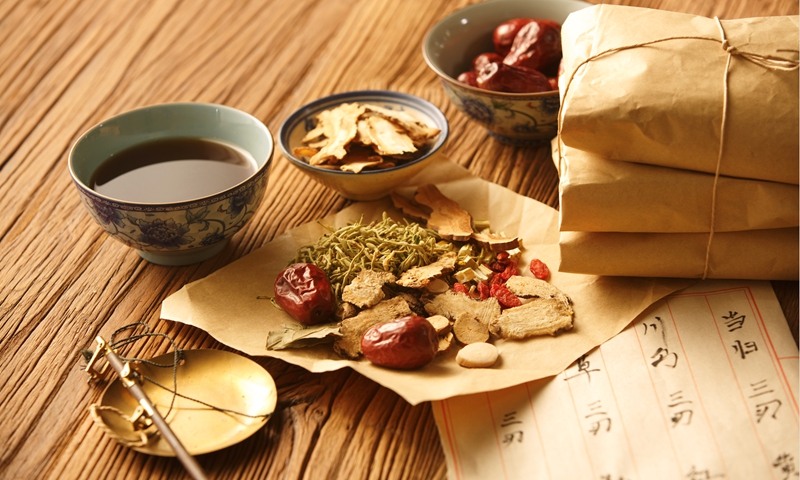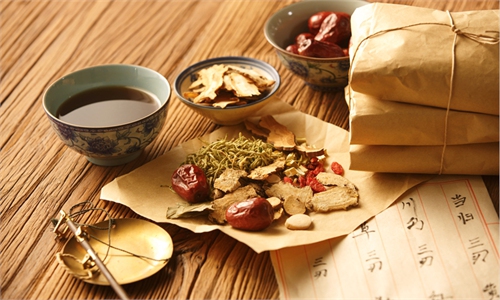
kinds of traditional Chinese medicines Photo: VCG
After years of effort, the first Chinese-Arabic Dictionary of Basic Terms and Specifications for Traditional Chinese Medicine (TCM) has been published, breaking language barriers to help bring TCM culture to the Arabic world.
The dictionary was edited by Li Jinli, a professor at Qinghai Minzu University and vice president of the Hui Ethnic Medicine Research Institute, who spent more than two years translating and editing, the China News Service reported on Wednesday.
According to the report, the dictionary has eight sections that cover content such as professional terms in TCM, pathology, names of Chinese medicines and acupuncture. The dictionary boasts more than 6,000 entries.
Li told media that TCM is the quintessence of Chinese culture, recording the rich experience and theoretical knowledge of the Chinese people in their fight against disease over thousands of years.
Li pointed out that over the years, various versions of the dictionary have mainly been translated into English, French, German, Russian and Japanese, while other languages have been left out in the cold for the most part.
"Now some foreigners are attracted by the effectiveness of TCM, and our medicine's influence in international society has been increasing," a doctor at a TCM Department of a hospital in North China's Shanxi Province told the Global Times on Thursday.
The doctor added that he believes that translations of the dictionary will help people in other countries further understand TCM and therefore increase its effectiveness.
"TCM can also be beneficial to Arabic people," he said.
Tan Qilong, head of the Hui Ethnic Medicine Research Institute, praised the dictionary for opening another window for TCM to reach the rest of the world and allow more people benefit from the curative effect of simple and convenient TCM.
The Chinese-English dictionary of TCM Basic Terms was published in 2008 and a Chinese-German version was published in 2017. These versions were edited with cooperation from overseas institutes.
The Chinese-German version was worked on by the World Federation of Chinese Medicine Societies and Technische Universität München and covers 6,526 entries. Each entry includes Chinese pinyin and corresponding terms in German, while entries are arranged according to the academic system of TCM.
Many doctors have said they believe that TCM can play a bigger role in fighting the COVID-19 pandemic. During the outbreak in Guangzhou, South China's Guangdong Province, in May and June, among the 166 local cases in hospitals, 118 were treated solely with TCM therapy, accounting for 71 percent of total treatment. TCM helped 57 patients who were vulnerable to severe illness from experiencing such severe symptoms, Zhang Zhongde, deputy head of the COVID-19 Response Group led by the National Administration of Traditional Chinese Medicine, said at a press conference held in December.
The international influence of TCM is expanding. International students from the China University of Petroleum attended classes about TCM culture at the TCM Cultural Base at the Traditional Chinese Medical Hospital in Qingdao, East China's Shandong Province, in April 2021.

